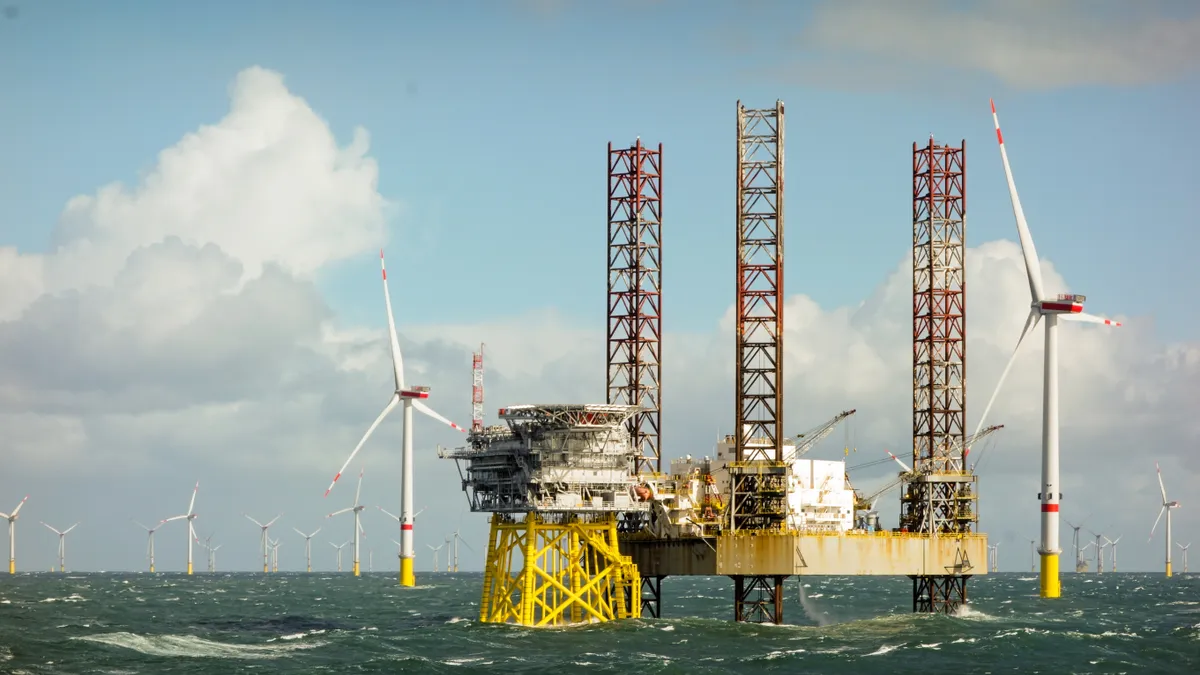Dive Brief:
- The New York State Energy Research and Development Authority is working on a second offshore wind master plan focusing on development in deeper waters, and plans to release a blueprint in the spring, an official said.
- Georges Sassine, NYSERDA’s vice president for large-scale renewables, announced during a session of a recent Floating Offshore Wind Shot summit that the agency is “in the midst of kickstarting” the plan and encouraging innovation in the floating wind space.
- NYSERDA said it will study the risks and benefits of launching offshore wind in deeper waters and release a synthesis of those studies around 2025.
Dive Insight:
Sassine said developments in floating offshore wind technologies will be key to supporting New York’s effort to build out offshore wind in lease areas where the ocean is deeper than 60 meters.
“We're in the midst of kick-starting that effort, with guidance and support from other state agencies, subject matter experts and different stakeholders,” he said at a panel discussion Feb. 23. “We think that this is going to unlock a new area for New York and create a market for floating technologies here on the East Coast.”
NYSERDA’s comment confirmed that the second master plan will identify new lease areas in the New York Bight beyond the depth of 60 meters, and recommend them to the U.S. Department of Interior’s Bureau of Ocean Energy Management.
In partnership with the Department of Energy, NYSERDA funded the creation of the National Offshore Wind Research and Development Consortium, or NOWRDC, in 2018 to overcome technological barriers to offshore wind while lowering cost and risks.
During the same panel on Feb. 23, the consortium’s executive director, Lyndie Hice-Dunton, said floating wind has been a priority. Of 52 projects that NOWRDC has funded, 12 have been related to floating structure engineering.
One of those projects “has identified a potential 34% cost reduction using shared anchors and mooring lines,” Hice-Dunton said, while another indicated that synthetic rope systems can bring costs nearly 14 times lower than the cost of all-chain mooring systems.
Hice-Dunton said NOWRDC is an example of an interstate partnership that could be critical in the future. California, New Jersey, New York, Maine, Maryland, Massachusetts and Virginia are in the partnership, with California as the most recent addition and first West Coast member, which she said broadened the consortium’s geographic scope and will provide “new and innovative opportunities.”















